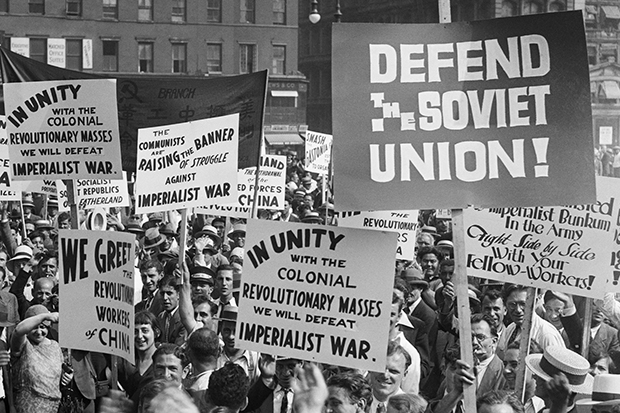Team Politics has gone international! Who cares if you can’t find Ukraine on a map? Festoon your home with Ukrainian flags! Change your Twitter avatar to a heart-shaped Ukrainian flag! Tattoo your entire body blue and yellow! It’s all about Ukraine — until the next war or the Azov Battalion gets caught doing something awful, whichever comes first.
But why limit yourself to the yellow-and-blue bicolor you never heard of before two months ago? The United States is directly involved in such a wide range of foreign conflicts, regime-change operations and proxy wars that there’s a shallow virtue signal for every wardrobe choice—including yours.
You probably haven’t given much thought to the six years-and-counting civil war in Yemen. The American media hasn’t either. But your ignorance doesn’t stop you from pontificating about Ukraine—nor should it mean you shouldn’t rush to pick sides in this colorful blood-soaked extravaganza that has claimed tens of thousands of lives. Wearing a T-shirt featuring the black, red and green flag of the Houthi rebel movement not only matches the color scheme of that of the Houthis’ hip Iranian backers, it may convince sporty members of the opposite sex that you’re on the national soccer team of yet some equatorial country no one has heard of. At cocktail receptions, pretend to be into the Yemeni-Welsh music scene and speak loudly about the need to boycott Yemeni oil.
Conversely, you can make a bold statement against the “fake news” by rocking the white-calligraphy-on-green of the Saudis who back the Sana’a-based government of President Rashad al-Alimi, and are themselves backed by the U.S. Donald Trump talks a good game about hating journalists; Saudi Arabia actually kills them in their own consulates. Show your support for Saudi Arabia; never let a woman drive.
If your taste in vacuous politically-tinged fashion statements runs to the outré, try rocking the #IStandWithAfghanistan hashtag to show your thoughtless concern for the 95% of the population there that risks starving to death—or the thousands of newborn babies that already have—because President Joe Biden has imposed devastating economic sanctions on the new government there that could literally kill nearly the entire population of an entire country. You have two options: the black Shahada-on-white of the Taliban or the maroon, forest green and black of the recently-deposed American puppet regime. Taliban-white wardrobes work best for American virtue signalers based in the warmer climates of the South; if you dig designer clothing with logos, you may prefer the old Northern Alliance seal. Sample quote: “Those guys who fell off the planes were luckier than those who are slowly starving to death, huh?”
Alternatively, there’s always the jokester approach: support the United States and its theft of billions of dollars in Afghan government funds, money that could be used to feed millions of starving people we used to pretend to care about. Go on Instagram, post photos of every one of the six meals a day you consume with the hashtag #USAIStandWithMyOwnFatAssUSA. And vote for your local Democratic congressman this November.
Avant-garde symbol-mongers can make boldly confusing statements about the U.S.-involved wars of the future. It’ll be hard to pass up the classic communist red-and-yellow scheme of the People’s Republic of China should the mainland decide to invade Taiwan, but those who want to avoid being canceled among the NPR-Smart set will need to rock the red white and blue of the island’s nationalist flag as they twist their brains into protesting the invasion of a country in the United States doesn’t recognize diplomatically as existing in the first place. Support Taiwanese independence by ordering dumplings from your local Chinese restaurant. Some of them are delicious!
Next time: Recycling—virtue-signaling for the whole planet without doing anything.
(Ted Rall (Twitter: @tedrall), the political cartoonist, columnist and graphic novelist, is the author of a new graphic novel about a journalist gone bad, “The Stringer.” Order one today. You can support Ted’s hard-hitting political cartoons and columns and see his work first by sponsoring his work on Patreon.)


 Like a lepidopteran Charlie Brown drawn to Lucy van Pelt’s flaming football, Congressional progressives keep falling for corporate Democrats’ pathetically predictable, and transparently self-serving, pleas for unity. Support our priorities, the centrists keep urging, and we’ll get around to your stuff later.
Like a lepidopteran Charlie Brown drawn to Lucy van Pelt’s flaming football, Congressional progressives keep falling for corporate Democrats’ pathetically predictable, and transparently self-serving, pleas for unity. Support our priorities, the centrists keep urging, and we’ll get around to your stuff later.

